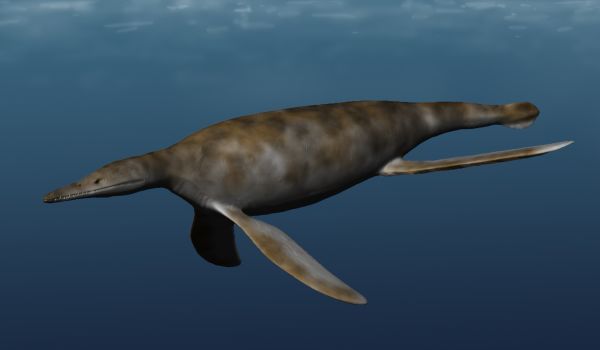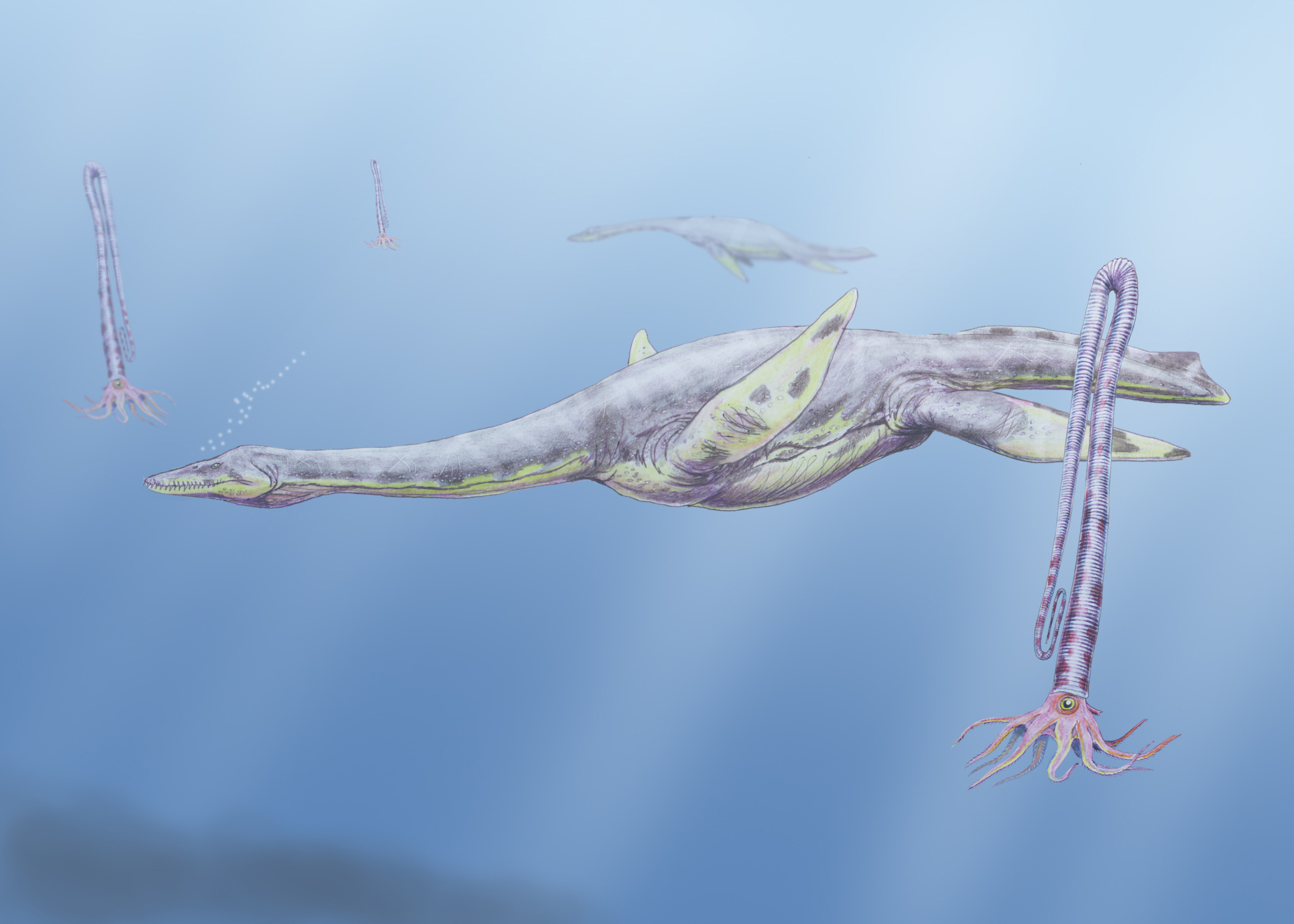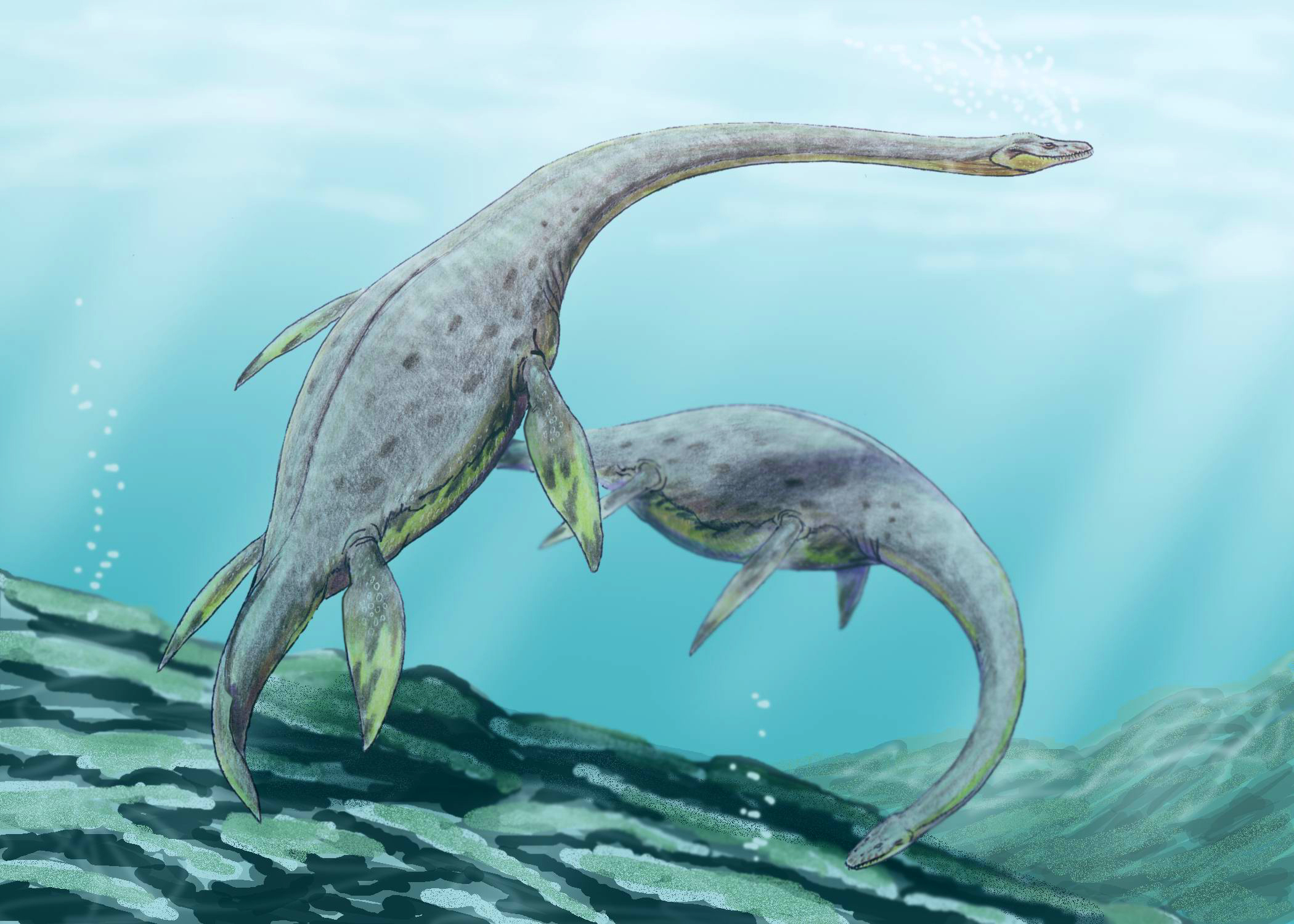|
Vinialesaurus
''Vinialesaurus'' is a genus of plesiosaur from the Late Jurassic ( Oxfordian) Jagua Formation of Pinar del Río, Cuba. The type species is ''Vinialesaurus caroli'', first described as ''Cryptocleidus caroli'' by De la Torre and Rojas in 1949 under the holotype MNHNCu P 3008, and redescribed by Gasparini, Bardet and Iturralde in 2002. The authors of the 2002 paper considered ''Vinialesaurus'' distinct enough from ''Cryptocleidus'' to warrant its own genus, but it was broadly similar to ''Cryptocleidus''. The name ''Vinialesaurus'' honors Viñales, the town in western Cuba where the fossils of ''Vinialesaurus'' was discovered. These fossils consist of a mostly complete skull, jaw, and portions of the vertebrae. It was a relatively small plesiosaur, reaching in length and in body mass. See also * List of plesiosaur genera * Timeline of plesiosaur research This timeline of plesiosaur research is a chronologically ordered list of important fossil discoveries, controversies ... [...More Info...] [...Related Items...] OR: [Wikipedia] [Google] [Baidu] |
Jagua Formation
The Jagua Formation is a Late Jurassic (middle to late Oxfordian) geologic formation in the Sierra de los Órganos and Sierra del Rosario mountain ranges in Pinar del Río Province, western Cuba. Plesiosaur, pliosaur, pterosaur,Barrett et al., 2008 metriorhynchid, turtle and dinosaur remains are among the fossils that have been recovered from its strata. Description The formation comprises marine shales and limestones. The thick Jagua Vieja Member consists of black shales and horizontally laminated marly micritic to biomicritic limestones. The latter contains calcareous concretions which the fossils are found in. The formation overlies the San Cayetano Formation and is overlain by the Guasasa Formation. The bedding direction is steeply dipping towards the northwest. Fossil content Vertebrate paleofauna Other fossils *'' Favreina'' *'' Globochaete'' * '' Gryphaea mexicana'' - Pan de Azúcar Mb. * '' Lepidotes gloriae'' * '' Liostrea mairei'' * '' L. sandalina' ... [...More Info...] [...Related Items...] OR: [Wikipedia] [Google] [Baidu] |
List Of Plesiosaur Genera
This list of plesiosaurs is a comprehensive listing of all genera that have ever been included in the order Plesiosauria, excluding purely vernacular terms. The list includes all commonly accepted genera, but also genera that are now considered invalid, doubtful (''nomen dubium''), or were not formally published (''nomen nudum''), as well as junior synonyms of more established names, and genera that are no longer considered plesiosaurs. The list currently includes 201 genera. Scope and terminology There is no official, canonical list of plesiosaur genera but one of the most thorough attempts can be found on the Plesiosauria section of Mikko Haaramo's Phylogeny Archive; also pertinent is the Plesiosaur Genera section at Adam Stuart Smith's Plesiosaur Directory.See Smith, ''Plesiosaur Genera''. Naming conventions and terminology follow the International Code of Zoological Nomenclature. Technical terms used include: * Junior synonym: A name which describes the same taxon as a previou ... [...More Info...] [...Related Items...] OR: [Wikipedia] [Google] [Baidu] |
Plesiosaur
The Plesiosauria (; Greek: πλησίος, ''plesios'', meaning "near to" and ''sauros'', meaning "lizard") or plesiosaurs are an order or clade of extinct Mesozoic marine reptiles, belonging to the Sauropterygia. Plesiosaurs first appeared in the latest Triassic Period, possibly in the Rhaetian stage, about 203 million years ago. They became especially common during the Jurassic Period, thriving until their disappearance due to the Cretaceous–Paleogene extinction event at the end of the Cretaceous Period, about 66 million years ago. They had a worldwide oceanic distribution, and some species at least partly inhabited freshwater environments. Plesiosaurs were among the first fossil reptiles discovered. In the beginning of the nineteenth century, scientists realised how distinctive their build was and they were named as a separate order in 1835. The first plesiosaurian genus, the eponymous '' Plesiosaurus'', was named in 1821. Since then, more than a hundred ... [...More Info...] [...Related Items...] OR: [Wikipedia] [Google] [Baidu] |
Cryptoclidids
Cryptoclididae is a family of medium-sized plesiosaurs that existed from the Middle Jurassic to the Early Cretaceous. They had long necks, broad and short skulls and densely packed teeth. They fed on small soft-bodied preys such as small fish and crustaceans. The earliest members of the family appeared during the early Bajocian, and they represented the dominant group of long-necked plesiosaurs during the latter half of the Jurassic. Classification In 2010, two supposed late Cretaceous members of the group were reclassified as other kinds of plesiosauroids. '' Kaiwhekea'' was reclassified to Leptocleididae, and '' Aristonectes'' was transferred to Elasmosauridae. Cladogram A cladogram (from Greek ''clados'' "branch" and ''gramma'' "character") is a diagram used in cladistics to show relations among organisms. A cladogram is not, however, an evolutionary tree because it does not show how ancestors are related to ... based on Ketchum and Benson (2010): References Exte ... [...More Info...] [...Related Items...] OR: [Wikipedia] [Google] [Baidu] |
2002 In Paleontology
Plants Gymnosperms Angiosperms Arthropods Insects Conodonts New taxa Archosauromorphs Dinosaurs New taxa Data courtesy of George Olshevsky's dinosaur genera list. Birds New taxa Plesiosaurs New taxa Pterosaurs In October, a partial ''Mesadacylus'' wing was discovered in the Kingsview Quarry of Colorado. This find marks the first time that a Morrison pterosaur has been found at more than one site in the formation.Foster, J. (2007). "''Mesadactylus ornithosphyos''." ''Jurassic West: The Dinosaurs of the Morrison Formation and Their World''. Indiana University Press. pp. 159-160. New taxa Lepidosauromorphs Squamates New taxa Synapsids Non-mammalian References {{Reflist, 2 2000s in paleontology Paleontology Paleontology (), also spelled palaeontology or palæontology, is the scientific study of life that existed prior to, and sometimes including, the start of the Holocene epoch (roughly 11,700 years before present) ... [...More Info...] [...Related Items...] OR: [Wikipedia] [Google] [Baidu] |
Timeline Of Plesiosaur Research
This timeline of plesiosaur research is a chronologically ordered list of important fossil discoveries, controversies of interpretation, taxonomic revisions, and cultural portrayals of plesiosaurs, an order of marine reptiles that flourished during the Mesozoic Era. The first scientifically documented plesiosaur fossils were discovered during the early 19th century by Mary Anning. Plesiosaurs were actually discovered and described before dinosaurs. They were also among the first animals to be featured in artistic reconstructions of the ancient world, and therefore among the earliest prehistoric creatures to attract the attention of the lay public. Plesiosaurs were originally thought to be a kind of primitive transitional form between marine life and terrestrial reptiles. However, now plesiosaurs are recognized as highly derived marine reptiles descended from terrestrial ancestors. Early researchers thought that plesiosaurs laid eggs like most reptiles. They commonly imagined p ... [...More Info...] [...Related Items...] OR: [Wikipedia] [Google] [Baidu] |
Oxfordian (stage)
The Oxfordian is, in the ICS' geologic timescale, the earliest age of the Late Jurassic Epoch, or the lowest stage of the Upper Jurassic Series. It spans the time between 163.5 ± 1.0 Ma and 157.3 ± 1.0 Ma (million years ago). The Oxfordian is preceded by the Callovian and is followed by the Kimmeridgian. Stratigraphic definitions The Oxfordian Stage was called "Clunch Clay and Shale" by William Smith (1815–1816); in 1818 W. Buckland described them under the unwieldy title "Oxford, Forest or Fen Clay". The term Oxfordian was introduced by Alcide d'Orbigny in 1844. The name is derived from the English city of Oxford, where the beds are well developed, but they crop out almost continuously from Dorset to the coast of Yorkshire, generally forming low, broad valleys. They are well exposed at Weymouth, Oxford, Bedford, Peterborough, and in the cliffs at Scarborough, Red Cliff and Gristhorpe Bay. Rocks of this age are found also in Uig and Skye. The base of the Oxfordian ... [...More Info...] [...Related Items...] OR: [Wikipedia] [Google] [Baidu] |
Fossil Taxa Described In 2002
A fossil (from Classical Latin , ) is any preserved remains, impression, or trace of any once-living thing from a past geological age. Examples include bones, shells, exoskeletons, stone imprints of animals or microbes, objects preserved in amber, hair, petrified wood and DNA remnants. The totality of fossils is known as the ''fossil record''. Paleontology is the study of fossils: their age, method of formation, and evolutionary significance. Specimens are usually considered to be fossils if they are over 10,000 years old. The oldest fossils are around 3.48 billion years old to 4.1 billion years old. Early edition, published online before print. The observation in the 19th century that certain fossils were associated with certain rock strata led to the recognition of a geological timescale and the relative ages of different fossils. The development of radiometric dating techniques in the early 20th century allowed scientists to quantitatively measure the abso ... [...More Info...] [...Related Items...] OR: [Wikipedia] [Google] [Baidu] |
Fossils Of Cuba
A fossil (from Classical Latin , ) is any preserved remains, impression, or trace of any once-living thing from a past geological age. Examples include bones, shells, exoskeletons, stone imprints of animals or microbes, objects preserved in amber, hair, petrified wood and DNA remnants. The totality of fossils is known as the ''fossil record''. Paleontology is the study of fossils: their age, method of formation, and evolutionary significance. Specimens are usually considered to be fossils if they are over 10,000 years old. The oldest fossils are around 3.48 billion years old to 4.1 billion years old. Early edition, published online before print. The observation in the 19th century that certain fossils were associated with certain rock strata led to the recognition of a geological timescale and the relative ages of different fossils. The development of radiometric dating techniques in the early 20th century allowed scientists to quantitatively measure the absolute ... [...More Info...] [...Related Items...] OR: [Wikipedia] [Google] [Baidu] |
Jurassic Cuba
The Jurassic ( ) is a geologic period and stratigraphic system that spanned from the end of the Triassic Period million years ago (Mya) to the beginning of the Cretaceous Period, approximately Mya. The Jurassic constitutes the middle period of the Mesozoic Era and is named after the Jura Mountains, where limestone strata from the period were first identified. The start of the Jurassic was marked by the major Triassic–Jurassic extinction event, associated with the eruption of the Central Atlantic Magmatic Province. The beginning of the Toarcian Stage started around 183 million years ago and is marked by an extinction event associated with widespread oceanic anoxia, ocean acidification, and elevated temperatures likely caused by the eruption of the Karoo-Ferrar large igneous provinces. The end of the Jurassic, however, has no clear boundary with the Cretaceous and is the only boundary between geological periods to remain formally undefined. By the beginning of the Jurassic, t ... [...More Info...] [...Related Items...] OR: [Wikipedia] [Google] [Baidu] |
Late Jurassic Reptiles Of North America
Late may refer to: * LATE, an acronym which could stand for: ** Limbic-predominant age-related TDP-43 encephalopathy, a proposed form of dementia ** Local-authority trading enterprise, a New Zealand business law ** Local average treatment effect, a concept in econometrics Music * ''Late'' (album), a 2000 album by The 77s * Late!, a pseudonym used by Dave Grohl on his ''Pocketwatch'' album * Late (rapper), an underground rapper from Wolverhampton * "Late" (song), a song by Blue Angel * "Late", a song by Kanye West from ''Late Registration'' Other * Late (Tonga), an uninhabited volcanic island southwest of Vavau in the kingdom of Tonga * "Late" (''The Handmaid's Tale''), a television episode * LaTe, Oy Laivateollisuus Ab, a defunct shipbuilding company * Late may refer to a person who is Dead See also * * * ''Lates'', a genus of fish in the lates perch family * Later (other) * Tardiness * Tardiness (scheduling) In scheduling, tardiness is a measure of a delay in exe ... [...More Info...] [...Related Items...] OR: [Wikipedia] [Google] [Baidu] |







